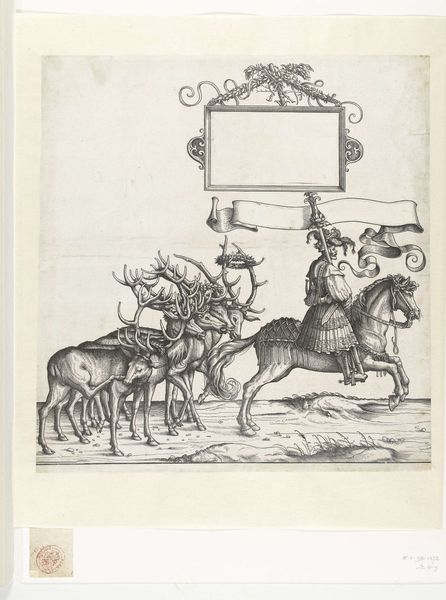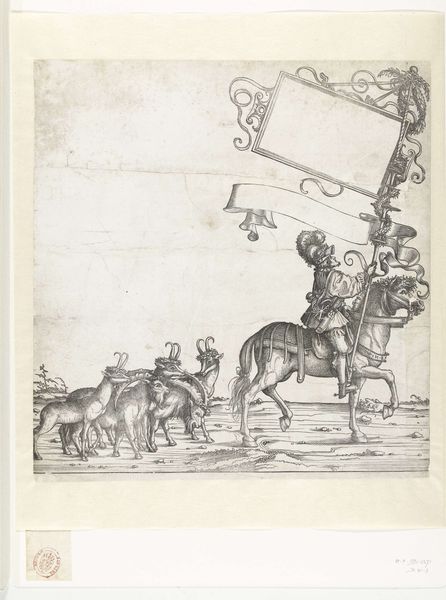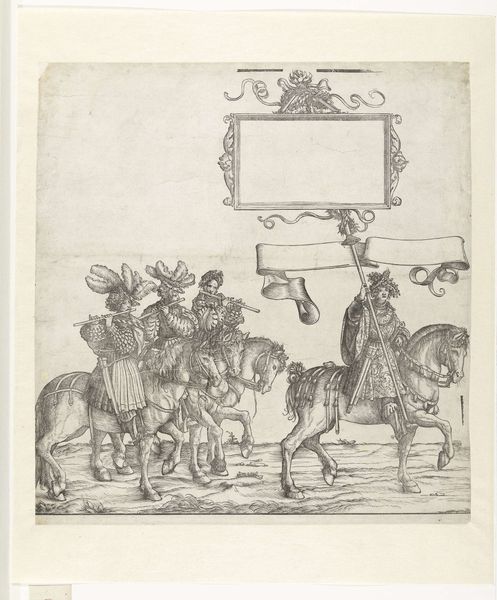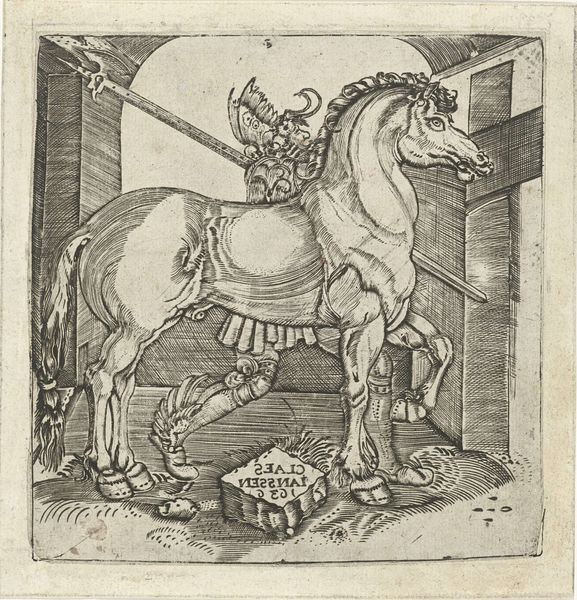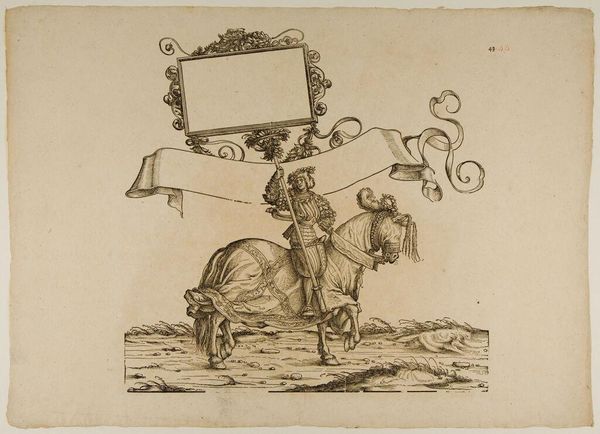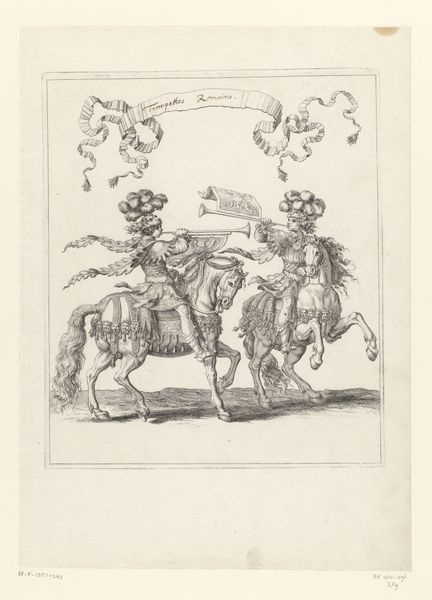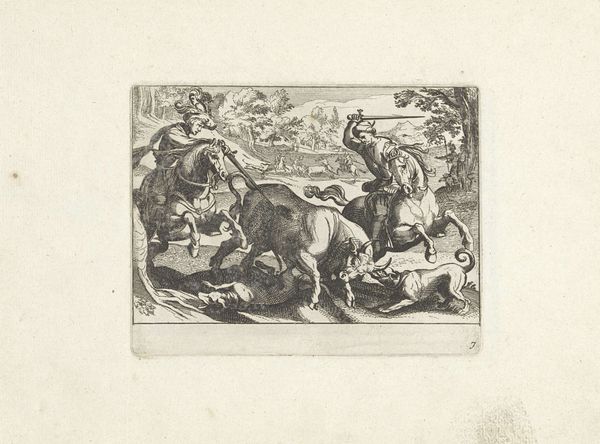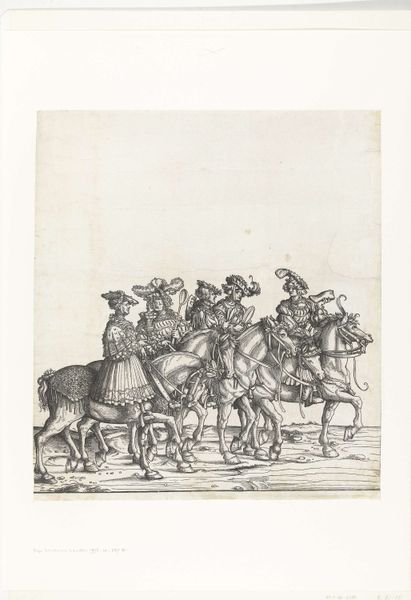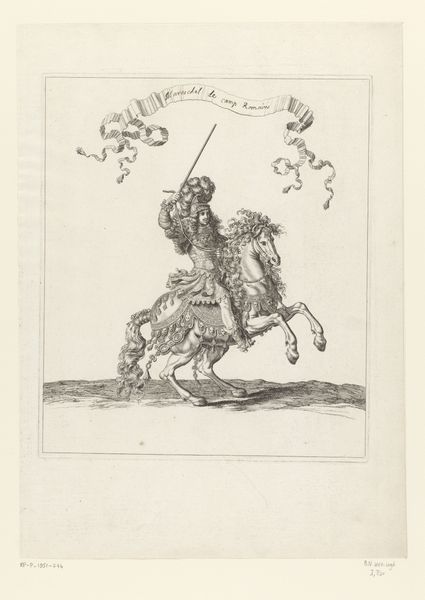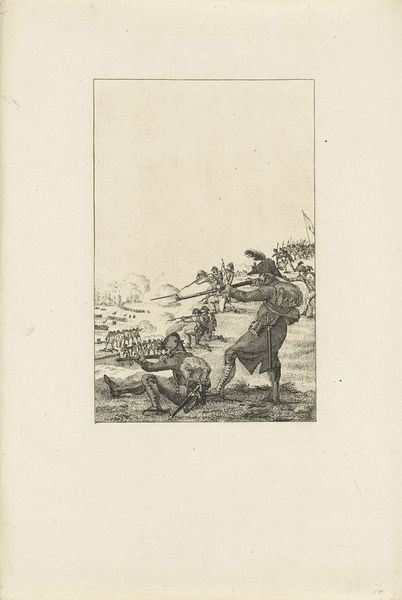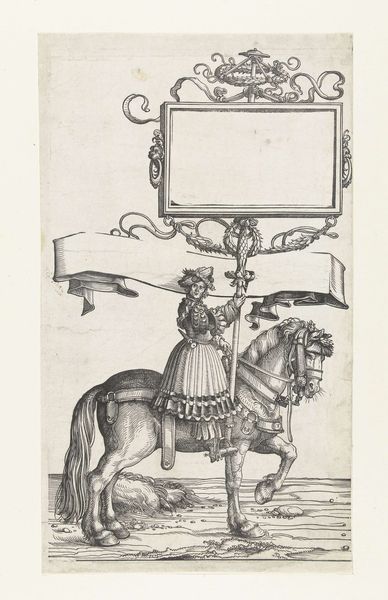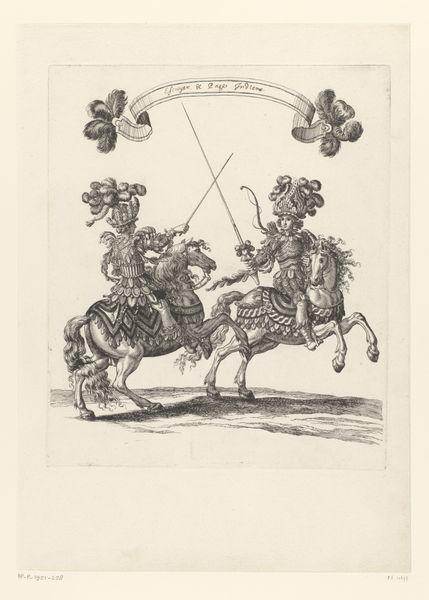
drawing, print, ink, woodcut
#
drawing
#
ink drawing
#
allegory
# print
#
landscape
#
figuration
#
ink
#
woodcut
#
northern-renaissance
Dimensions: height 400 mm, width 377 mm
Copyright: Rijks Museum: Open Domain
Editor: This ink drawing from the Northern Renaissance, "Five Wild Boar and a Standard Bearer on Horseback," created between 1483 and 1526 by Hans Burgkmair, strikes me as strangely unsettling. There's a contrast between the naturalistic depiction of the boars and the almost theatrical rider. What draws your attention in this piece? Curator: It’s fascinating how Burgkmair uses the relatively simple medium of ink and woodcut to address complex issues of power, class, and consumption. Consider the labor involved in producing this print, then further distributed. This piece challenges the concept of unique authorship. The printing process itself inherently allows for reproduction and dissemination. Editor: So, you’re saying it’s not just about the image, but also about how it was made and how it circulated? Curator: Precisely. And look at the standard bearer; he’s practically selling something – a claim, a right, an idea. Even the wild boars can be interpreted within the context of food scarcity and economic instability for the poor. Ask yourself what that banner could say, or more importantly, whom did it represent. The piece reflects social structures inherent at the time of printing and how images and art were actively utilized to further such economic endeavors. Editor: That is unexpected! I initially focused on just the visual elements, but your points are convincing when understanding it as part of the process. Curator: Yes, Burgkmair engages in social critique and commodity. He offers a critical look at production of both fine art and more traditional artisan practices. The final print as the resultant commercial material can and should be understood to be a point of access when engaging this artwork. Editor: It completely transforms my understanding. Thanks, I am going to need to reconsider the role of economic contexts to inform my perception of this art, and others. Curator: Indeed! Paying attention to the means of production helps us avoid a solely aesthetic interpretation. There is often value outside of its original intentions to those in present day contexts.
Comments
No comments
Be the first to comment and join the conversation on the ultimate creative platform.
